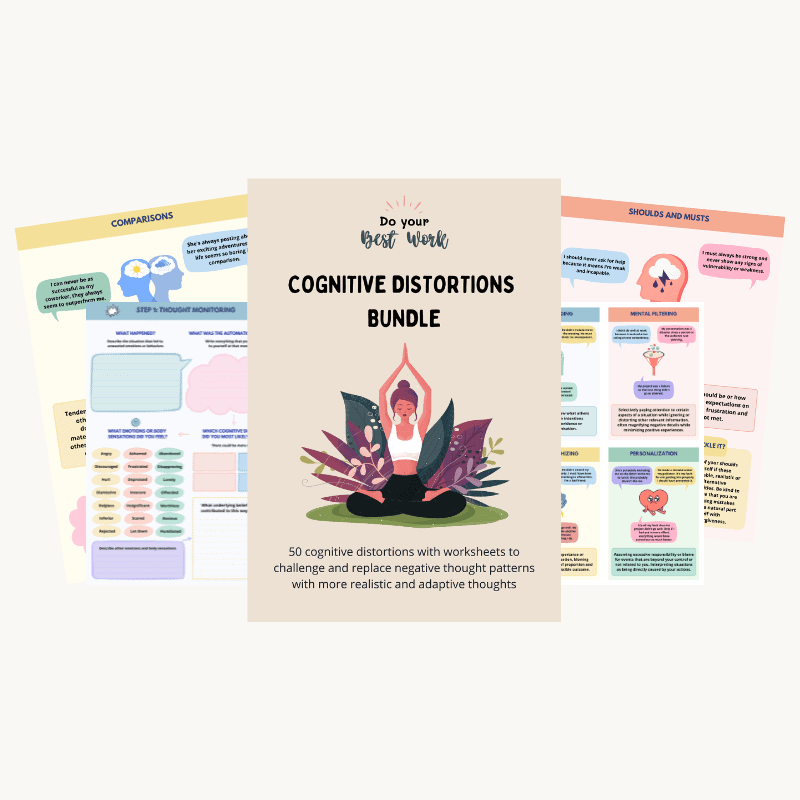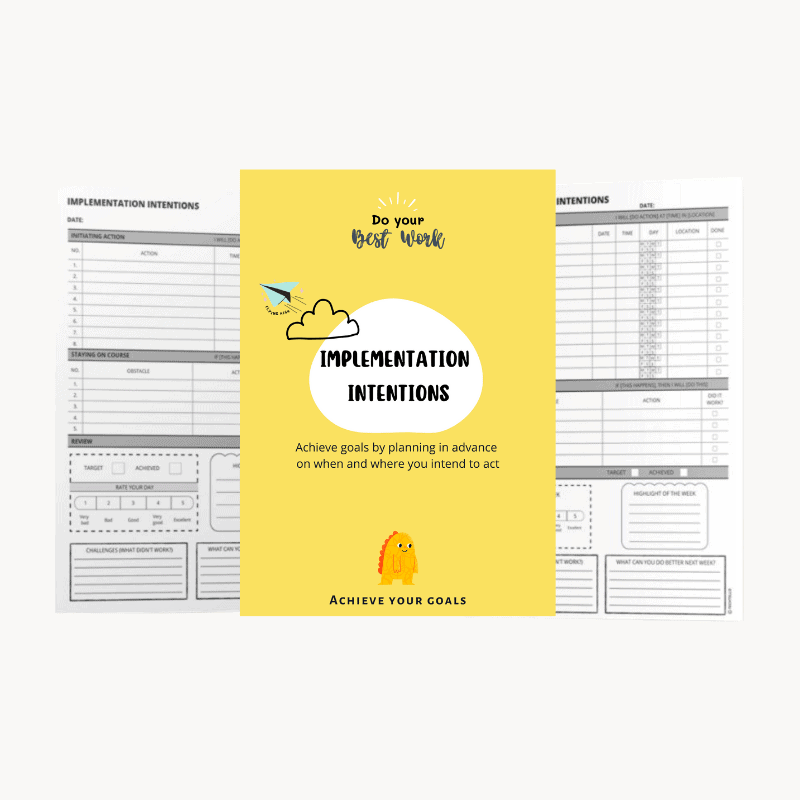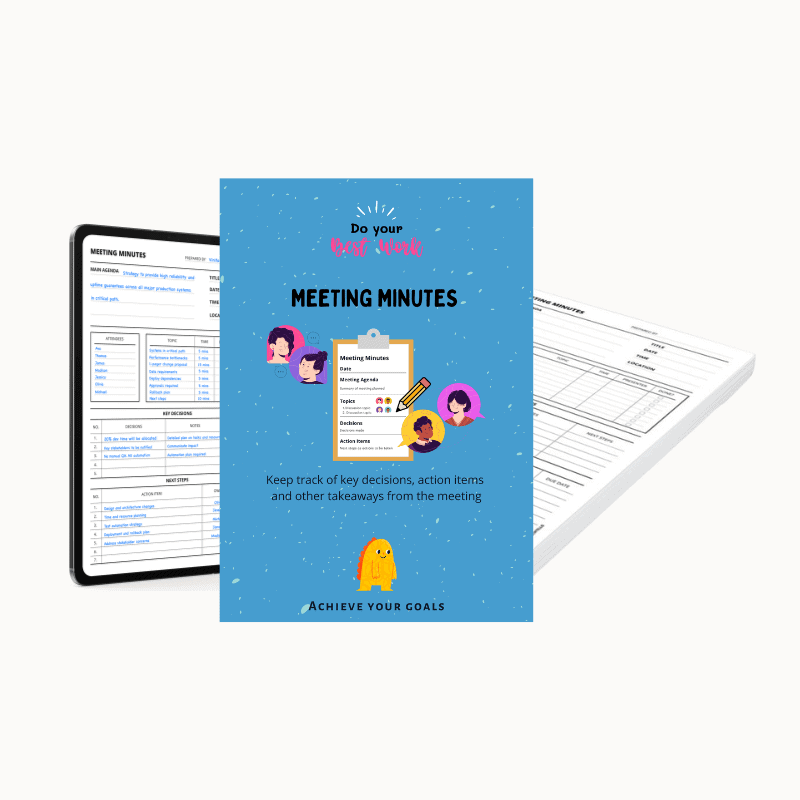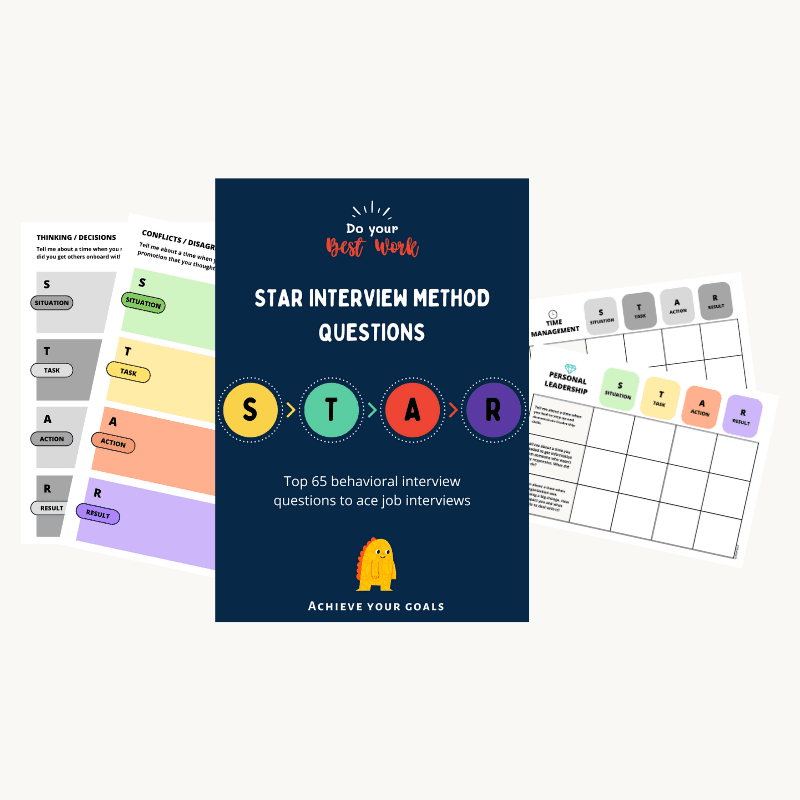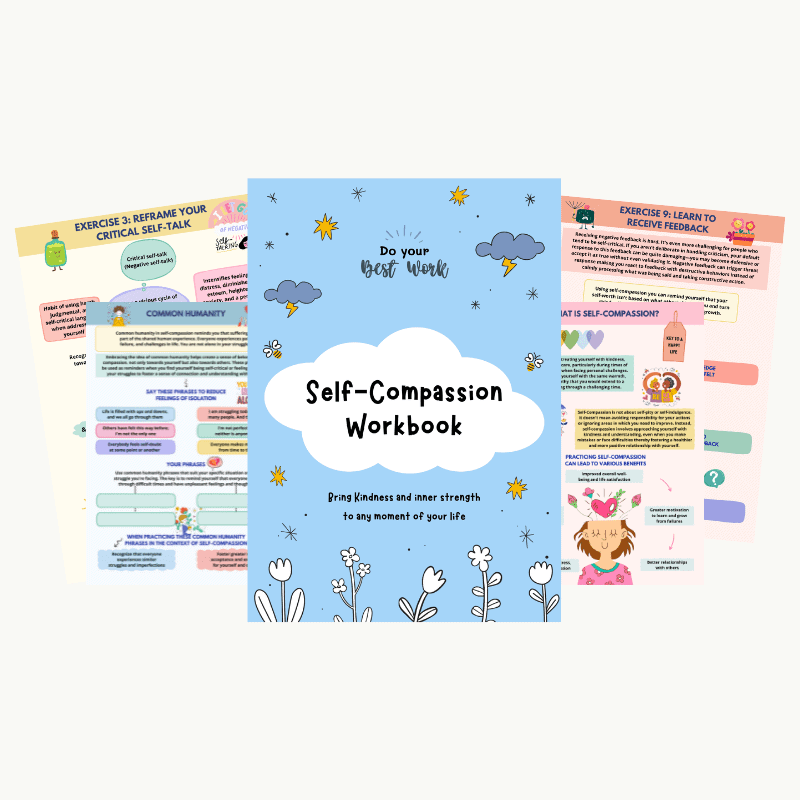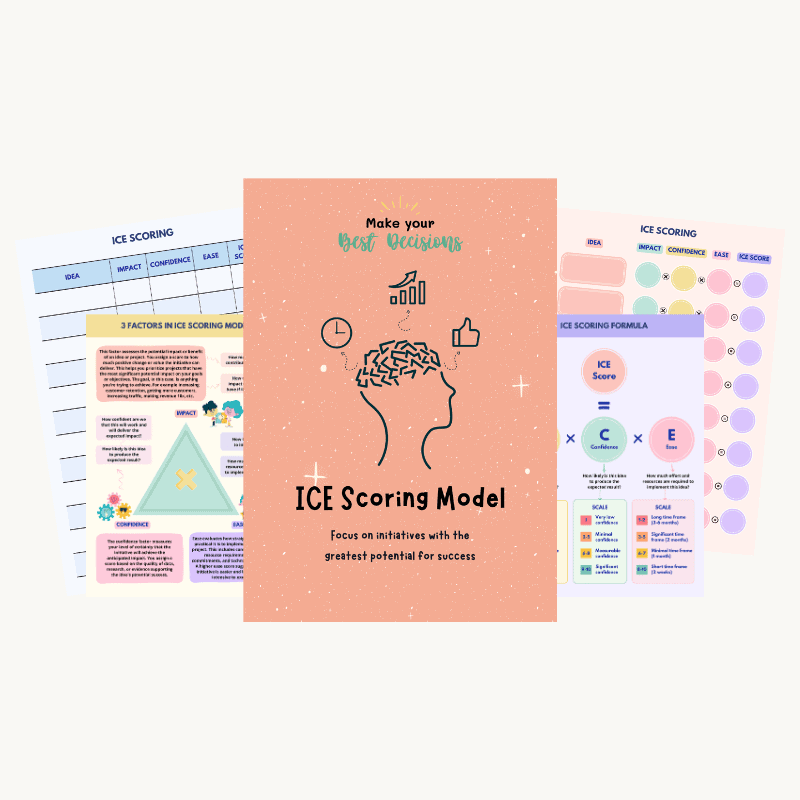Break the Overthinking Habit With these 5 Simple Strategies

Overthinking happens when a thought trapped inside your head goes in circles and you simply can’t stop. Dwelling on or worrying about the same thing repeatedly distracts you from your goals and derails you from your path.
Continuously analyzing, ruminating on past events, future possibilities, or present circumstances by playing the tape on repeat keeps you trapped in a cycle of worry, doubt, and indecision, which can lead to increased stress, mental exhaustion, and impact overall well-being.
Overthinking is invasive. It latches onto your worst fears, insecurities or things you don’t like about yourself and believe to be true. It can lead to worry, anxiety, stress, frustration, anger, nervousness, rumination or at times may even turn into obsession.
Overthinking may not only elevate your stress levels and exacerbate feelings of anxiety, it can lead to poor decisions by making choices based on irrational fears. Doubting your abilities can erode self-confidence and self-esteem over time and constantly questioning others can lead to conflict and mistrust in relationships.
Thinking and questioning our thinking is not bad. After all, it makes us highly self-aware and enables us to find better solutions. The problem is not thinking, but how much we think.
When thinking crosses the line of useful questioning, we obsess about the problem in our mind without doing anything about it in reality. One thought branches off into a million other thoughts, often unrelated and unrealistic.
Overthinking may appear like you’re trying to get to the bottom of the issue, but going too deep inside your mind actually makes you sink.
While healthy thinking inspires and motivates us to do better through constructive problem solving, openness to different perspectives and outcomes and focusing on the present moment while becoming non-judgmental, unhealthy thinking keeps us stuck in our head and prevents us from moving forward. Dwelling excessively on past mistakes or worrying about the future only exaggerates problems and magnifies worst-case scenarios with harsh self-judgment, self-blame and terrible decisions.
When we’re overthinking, the easiest thing to do is keep overthinking. To stop the cycle, we need to interrupt these thought patterns, and we can do that by taking a small step in the right direction. Then it becomes easier to take another right step, and another.
― Anne Bogel, Don’t Overthink It
Break the overthinking habit using these 5 practices:
Change your story
Your thoughts are not facts and there are alternative ways to interpret them, often in more positive ways. This is possible using Cognitive restructuring, which is an effective intervention technique to reduce overthinking.
Cognitive restructuring helps in noticing unhelpful, inaccurate and negative thought patterns as they occur and reframe them in more accurate and helpful ways. Challenging and replacing cognitive distortions with more realistic and adaptive thoughts can decrease emotional distress, improve decision-making, enhance self-esteem, and promote healthier relationships.
Reframing encourages you to say, ‘Let’s look at this another way.’ By changing the frame around a situation, you not only change your perception of it, but its meaning for you as well. If you were to take one painting and view it in three different frames, each combination would offer a completely different presentation. Your perceptions work the same way.
― Susan C. Young
Use these 4 steps to stop overthinking by deconstructing unhelpful thoughts and rebuilding them in more balanced and accurate ways.
Step 1: Thought Monitoring
Cognitive distortions are more likely to impact your moods and behaviors. You need to look for the warning signs―recurring negative or self-critical thoughts, emotional reactions to different situations or events. Paying attention to your thoughts and feelings will increase your self-awareness and enable you to identify the distorted thought and replace it with a more rational alternative.
Answer these questions:
What happened?
What was the automatic thought?
Which cognitive distortion did you most likely employ?
What emotions or body sensations did you feel?
What underlying belief might have contributed to this way of thinking?
Step 2: Evidence gathering
Evaluate the evidence supporting or contradicting the distorted thought. Look for objective facts, past experiences, and alternative explanations that challenge the validity of the thought.
Answer these questions:
Are your thoughts based on facts or feelings?
What evidence supports this thought?
What evidence goes against this thought?
What’s the consequence of continuing to believe the distorted thought?
Step 3: Alternative interpretations
Develop alternative thoughts that are more balanced, realistic, and rational. Consider different perspectives, positive aspects of the situation, and alternative explanations.
Answer these questions:
What are the alternative explanations for this situation?
What evidence supports these alternative perspectives?
Step 4: Reframing
Actively replace the distorted thought with the alternative thought that’s more realistic and accurate. Don’t engage in toxic positivity. The idea is to be closer to reality without distorting or exaggerating it. Repeat the new thought to yourself and reinforce its validity.
Answer these questions:
How can you reframe the situation with a more realistic and accurate perspective?
How does this new way of thinking make you feel?
Seeing things in a new way, with a new frame around it can break the overthinking habit by preventing you from being obsessed with one line of thinking and flexing your mind to other possibilities. Change the way you look at things. Challenge your story.
Cognitive Distortions Bundle
Challenge and replace irrational thoughts with more realistic and adaptive thoughts.
Calm your inner alarmist
When you engage in catastrophizing―anticipating the worst possible outcome for a given situation, often assuming that the negative consequences will be far more significant than they are likely to be―you jump to the most extreme and negative conclusions without considering more realistic or balanced alternatives, which contributes to a cycle of anxiety and avoidance with increased stress and a skewed perception of reality.
Sometimes I feel like throwing my hands up in the air and saying, ‘Enough!’ I immediately feel my brain seizing up when I do that. Then, instead of being smart in handling the workload, it’s easy to make bad decisions. You can end up catastrophizing, worrying about worst-case scenarios like missing deadlines and even losing your job. None of which helps you think any more clearly.
― Caroline Webb, How To Have A Good Day
To stop catastrophizing, you need to shift the focus away from catastrophic thoughts and replace them with more rational alternatives. Decatastrophizing technique helps you achieve that.
Through this process, you learn to challenge and reframe your negative thought patterns, leading to improved coping skills and a greater sense of control over your thoughts and emotions, thereby reducing anxiety and emotional distress associated with catastrophic thinking.
To stop overthinking, decatastrophize by asking these questions,
- What catastrophe is bothering you?
- How likely is it that it will come true? Share past experience or other evidence to support your thinking.
- If it does come true, what’s the worst that could happen? How likely is it on a scale from 1 (not at all likely) – 5 (very likely)?
- If it does come true, what’s the best case scenario? How likely is it on a scale from 1 (not at all likely) – 5 (very likely)?
- What techniques or strategies can you use to cope with the catastrophe if it does happen?
- If the catastrophe occurs, what are the chances you’ll be okay in 1 week, 1 month and 1 year from now?
Stop imagining problems that aren’t even there. Stop blowing things out of proportion. Break the overthinking habit by refusing to let your inner alarmist scare you and prevent you from separating fiction from reality.
Break up with worry
There are many parts of your life that you have no control over. Fixating on these aspects of your life that you cannot change leads to frustration, stress and anxiety. The more attention you pay to things beyond your control, the more stuck you get.
Worry is a special form of fear. To create worry, humans elongate fear with anticipation and memory, expand it in imagination, and fuel it with emotion.
― Edward M. Hallowell, Worry
A powerful framework to manage your worry is to look at it through the lens of control―is the worry within your control or outside it. You can let go of negativity and rumination by embracing things within your control and doing something positive about it.
Circle of control includes:
- Things that you have direct control over.
- Things that you may not completely control, but can influence in significant ways.
Spending time and energy here can improve mental health, build resilience and promote overall well-being.
Circle of concern includes things that you are concerned about but have no control over. Spending time and energy here can lead to feelings of inadequacy, helplessness and increased feelings of victimization.
To stop overthinking, spend more and more time in your circle of control:
- What’s worrying you, making you anxious or stressing you right now?
- Where does this worry belong―circle of control or circle of concern?
- If the worry is within your control, take positive action:
- What small action can you take to solve this problem?
- Who can you ask for advice or help?
- How can you be more self-compassionate?
- If the worry is not within your control, release it and let it go.
Worrying guarantees a troubled mind that only steals your peace and does not help you accomplish anything. Break the overthinking habit by shifting your energy to things within your control, letting go of blame, accuse and others feelings of victimization.
Circle of Control Workbook
Let go of negativity and rumination by embracing things within your control.
Become comfortable with good enough
When making a decision, it’s good to consider different options, alternative viewpoints and multiple sources. They prevent your biases, personal beliefs or other circumstantial constraints from limiting your decision and hence the outcome you achieve.
Having options is good, but having a large number of options to choose from can also be overwhelming. The more choices you have, the harder it is to make a decision. The abundance of information and too many choices can lead to overthinking and indecisiveness.
You may end up spending a lot of time researching solutions, fixate on the shortcoming of each one and continue investing time and energy with the hope to find the best option.
But instead of making a decision and moving on, choice overload can make you more and more unsure. It can cause you to delay the decision because too many options drains your cognitive system making you more prone to putting off the decision entirely.
Research also shows that more options can lead to decreased satisfaction and lower confidence in your choice making it more likely that you regret your decisions later.
To stop overthinking and steer yourself in the right direction, become a Satisficer.
Satisficing is one of the foundations of productive human behavior; it prevails when we don’t waste time on decisions that don’t matter, or more accurately, when we don’t waste time trying to find improvements that are not going to make a significant difference in our happiness or satisfaction.
― Daniel J. Levitin, The Organized Mind
Maximizer
“Make it perfect”
Maximizers strive to make a choice that will give them the maximum benefit. They seek and accept only the best. They can’t choose unless they have deeply examined every option which leads to non-stop information seeking and social comparison. They spend too much time deliberating possibilities and potential results. It often leads to regret, self-blame, dissatisfaction, and disappointment.
Satisficer
“It’s good enough”
Satisficers use a more modest criteria and choose an option that passes the threshold of acceptability. They settle for good enough and do not worry about the possibility that there might be something better out there. Instead of the ‘best’ choice, they learn to move ahead with what’s acceptable. It enables quicker decisions, reduced stress, and greater satisfaction.
Being comfortable with good enough isn’t about accepting mediocrity. It still requires making a conscious and thoughtful choice but to do so within boundaries and putting your time and energy into taking action instead of lamenting about the possibility of a better option out there.
To stop overthinking and become a satisficer, follow these 4 steps when making a decision:
Step 1: Set Boundaries
Set boundaries for the research you need to do when making a decision. Don’t leave it open ended—limit the information to gather, inputs to consider and set time limits.
What are the boundaries for your decision?
Be clear and concise. Vague boundaries will defeat its purpose.
Step 2: Assign a decision date
Don’t leave the decision date unassigned. Set a date considering the scope and complexity of the problem to create a sense of urgency.
When do you need to make this decision?
Step 3: Weigh in different options
List the pros and cons of each choice and just pick the one that seems to stand out in the moment.
What are the different options and what are the pros and cons of each choice?
Step 4: Put it into action
Once you have made a decision, don’t let your mind consider the possibility of a better one. Stop second guessing and get down to putting your decision into action.
How can you put this decision to action?
Stop second-guessing yourself. Stop worrying about making a wrong choice. A suboptimal timely decision is better than a late decision or no decision at all. Break the overthinking habit by being open-minded, flexible and pragmatic.
Reorient your state of mind
When your sense of awareness becomes narrow and distorted, your mind pulls you into dark places where you feel helpless and out of control. Negative feelings like fear, anxiety, frustration, insecurity, and feelings of isolation thrive when you are in this zone. Narrow focus limits your awareness of alternative perspectives, solutions, and possibilities, thereby trapping you in a cycle of rumination.
You can break out from getting trapped into a tunnel vision by shifting your perspective away from negative or unproductive thoughts and directing them towards the goals and outcomes you wish to achieve.
Visualization is a powerful tool to prevent overthinking by providing a structured way to focus the mind and redirect it towards productive and positive outcomes.
By immersing yourself in the visualization process, you can harness the power of imagination, emotion, and intention which can help reorient your state of mind by activating positive emotions, reinforcing positive beliefs and attitudes and clearing mental clutter and distractions.
Adopting a positive attitude by visualizing a positive outcome can render negative thinking ineffective. It can depressurize the moment by replacing anxiety and fear with the confidence required to do the job. Positive thinking in the form of positive images of the final outcome not only distracts you from fear of failure, it also helps you focus on the details for achieving success.
Visualization enables you to design the vision that will occupy your mind, ensuring that the greatest pull on you is your future—a compelling, exciting, and limitless future.
― Hal Elrod, The Miracle Morning
To stop overthinking, use the power of visualization. Do a mental check mark as you go through each step. Use all your senses to make the visualization as real and detailed as possible.
- Find a quiet and comfortable space where you can relax without distractions. This could be a quiet room, a peaceful outdoor setting, or any place where you feel comfortable and at ease.
- Start with defining what you wish to achieve. Repeat it to yourself multiple times. Give your mind a few seconds to align with your goals.
- Next, break down your goal into actionable steps and visualize yourself completing each step successfully.
- Anticipate potential challenges and obstacles that stand in your way. Imagine staying committed and motivated in the face of setbacks and overcoming these challenges with resilience and determination.
- Finally, visualize reaching your destination and achieving the desired outcome. Explore the feelings of joy, pride, fulfillment, or satisfaction that accompany achieving your goal. Think about all the positive effects of achieving this goal on your personal and professional life.
Unlock the door of possibility. Believe so you can achieve. Break the overthinking habit by creating a mental blueprint of your goals, making them feel more attainable and within your reach.
Summary
- We tend to overthink when we are stuck with one line of thinking and refuse to explore alternative viewpoints or different perspectives. Our minds’ stories are faulty most of the time and treating them as the source of truth leads to distorted beliefs with negative emotions at its peak. To break the overthinking habit, learn to challenge your story. Reframe it with a more realistic and accurate perspective.
- Some of us are more prone to exaggerating negative outcomes while sidelining other possibilities. Thinking about the worst case scenarios can help us be better prepared to deal with challenges and obstacles as they arise, but giving them more weightage than they are likely to occur can also prevent us from taking action and moving forward. Catastrophic thinking can keep you stuck in an overthinking cycle by keeping you busy to find ways to avoid the catastrophe which may not even occur. To break the overthinking habit, decatastrophize. Identify what’s more likely to occur and develop a plan to handle it.
- A feeling of sense of control is essential for our well-being. Worrying about things outside our control and trying to fix them can leave us feeling powerless, helpless, worthless and significantly lower our self-esteem. Have a sense of control, but over things you can influence, inspire or change. Everything else isn’t worth your time and effort. To break the overthinking habit, stay within your circle of control and let go of things outside it.
- We think that more choices will help us make better decisions, but too many choices can keep us stuck in analysis paralysis by making us overthink the decision. Instead of spending more and more time chasing a perfect decision, a better strategy is to identify a ‘good enough’ solution and iterate upon it. To break the overthinking habit, consider a few options, list their pros and cons and lead with the one that seems to stand out in that moment. A ‘good enough’ timely decision is better than no decision at all.
- Our goals may seem out of reach when we let fear and anxiety hijack our confidence to do the task and achieve success. Fear of failure, making mistakes or worrying about what lies ahead can distract us from taking small steps and making progress. To break this negative cycle of rumination and anxiety, engage in positive visualization towards the goals and outcomes you wish to achieve—think about the steps leading up to your goal and create a plan to tackle the obstacles that stand in its way.

